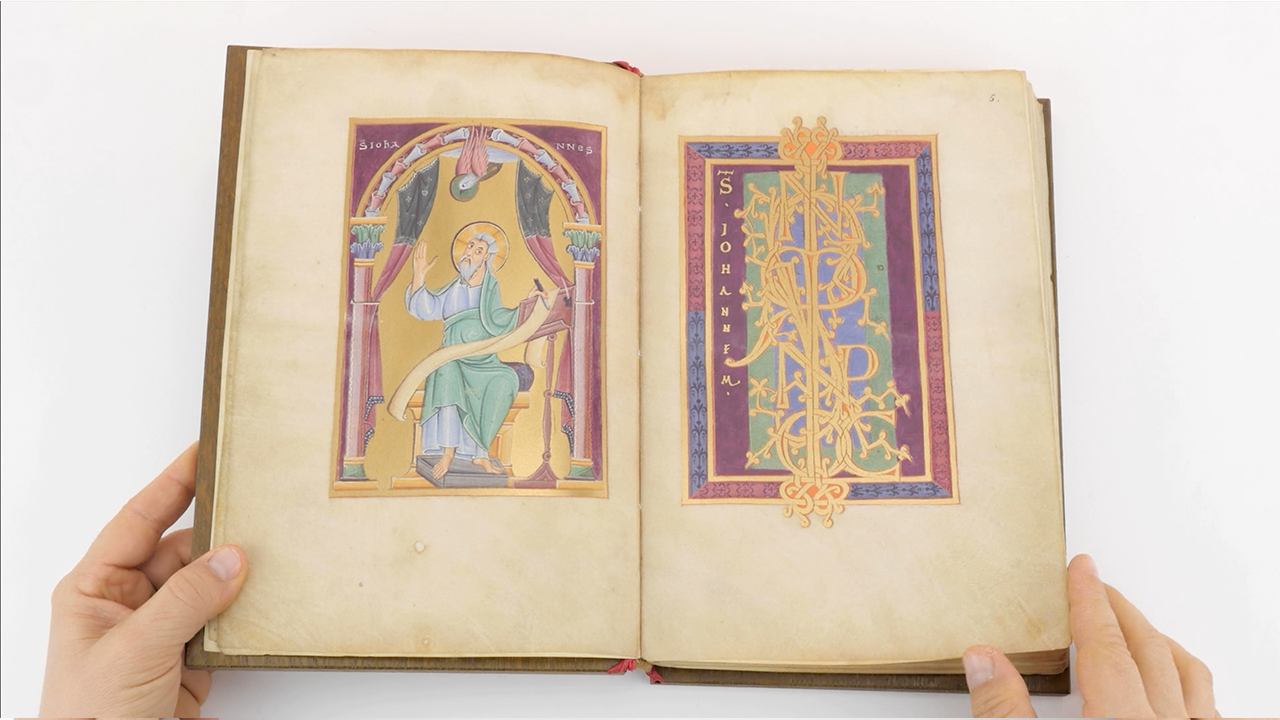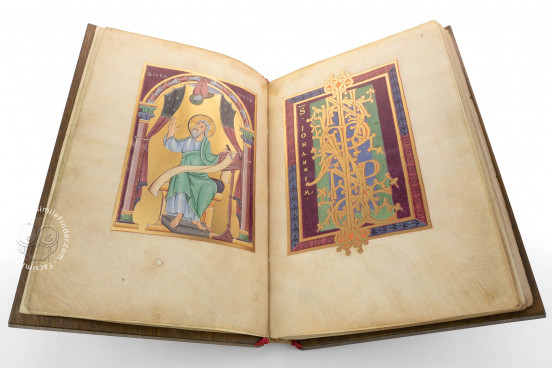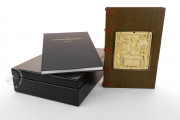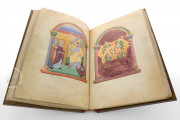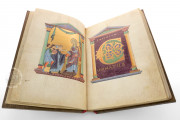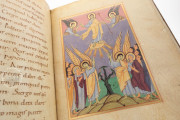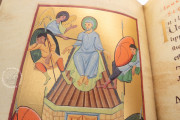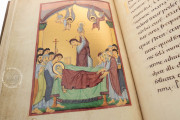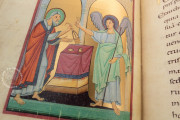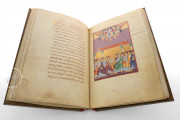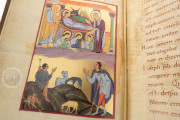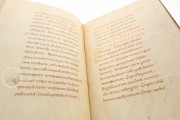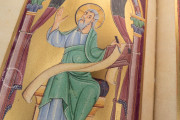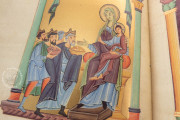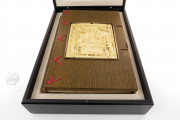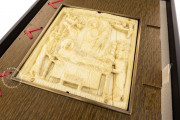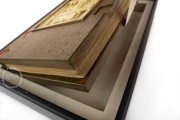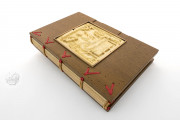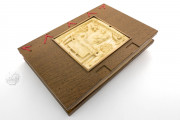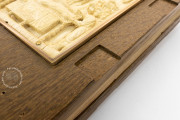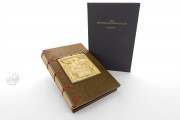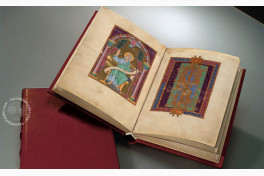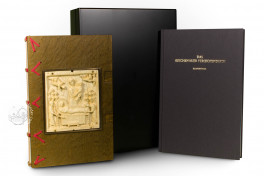In the eleventh century, the monastery of Reichenau had a leading scriptorium in the production of manuscripts during the Ottonian period. The Wolfenbüttel Gospel Lectionary is one of the outstanding codices produced in this scriptorium. Today in the Herzog August Library in Wolfenbüttel, the codex contains the pericopes, namely the Gospel readings for the Mass throughout the liturgical year.
In the early eleventh century, the German Emperor Henry II commissioned this book to be illuminated with nine full-page miniatures exemplary in quality and style of the Ottonian illuminations, with abundant use of gold color and purple, precious colors traditionally linked to the imperial power. The initial words of the major feasts occupy the entire page and are comparable in size and preciousness of colors to the facing full-page miniatures.
The Heavenly Inspiration of the Miniature Cycle
The brilliant colors of the miniatures in the Wolfenbüttel Gospel Lectionary seem not to have lost their original charm. The narrative cycle of the illuminations represents the main scenes of Christ's life. The series opens with the Nativity and the Annunciation to the Shepherds. The Adoration of the Magi presents the Virgin Mary with the Child approached by the kings from the Orient.
The large size of the figure of Mary and the Wise Men presenting gifts link this scene to the practice of presenting gifts to the king, visible in other Ottonian illuminations. The miniatures focus on the relationship between heaven and earth showing images of the Ascension of Christ, the Pentecost, and the Dormition, or Death, of the Virgin.
The Origin of the Wolfenbüttel Gospel Lectionary
The Wolfenbüttel Gospel Lectionary does not present clear evidence of its place of origin. However, the relevance given to the representation of the Dormition of the Virgin, which appears twice in the illuminations and in the ivory on the front cover, provide clues about the community that originally owned and used this manuscript.
The prominent role given to the representations of the Virgin suggests that the provenance of this manuscript could be related to the Hildesheim St. Michael Monastery, a place in which the devotion to the Virgin paid a special role.
The history of the provenance of the manuscript also suggests that it probably was originally in Hildesheim. The collector, August the Younger of Braunschweig-Lüneburg (1579-1666), was the founder of the Herzog August Library in Wolfenbüttel. He bought the Wolfenbüttel Gospel Lectionary along with other manuscripts, seven of which were in the St. Michael monastery in Hildesheim before they were stolen during the thirty-year War.
The Ivory Scene of the Dormition of the Virgin
The wood covers with the ivory panel are contemporary with the manuscript. The outstanding value of the original binding is enhanced by the quality of the engraved ivory, depicting the scene of the Dormition of the Virgin.
The ivory panel depicts Mary on her death bed while the apostles surround her. Showing liturgical practice in images, Peter swings a censer and Paul mourns at the feet of Mary. Following the Byzantine iconography of the Dormition of the Virgin, Christ stands behind the mother and holds her soul represented as a haloed child. Christ gives the soul to the angel who has already accepted the soul of Mary in the celestial realm.
We have 2 facsimiles of the manuscript "Wolfenbüttel Gospel Lectionary":
- Das Reichenauer Perikopenbuch (Standard Edition) facsimile edition published by Akademische Druck- u. Verlagsanstalt (ADEVA), 2009
- Das Reichenauer Perikopenbuch (Deluxe Edition) facsimile edition published by Akademische Druck- u. Verlagsanstalt (ADEVA), 2009

